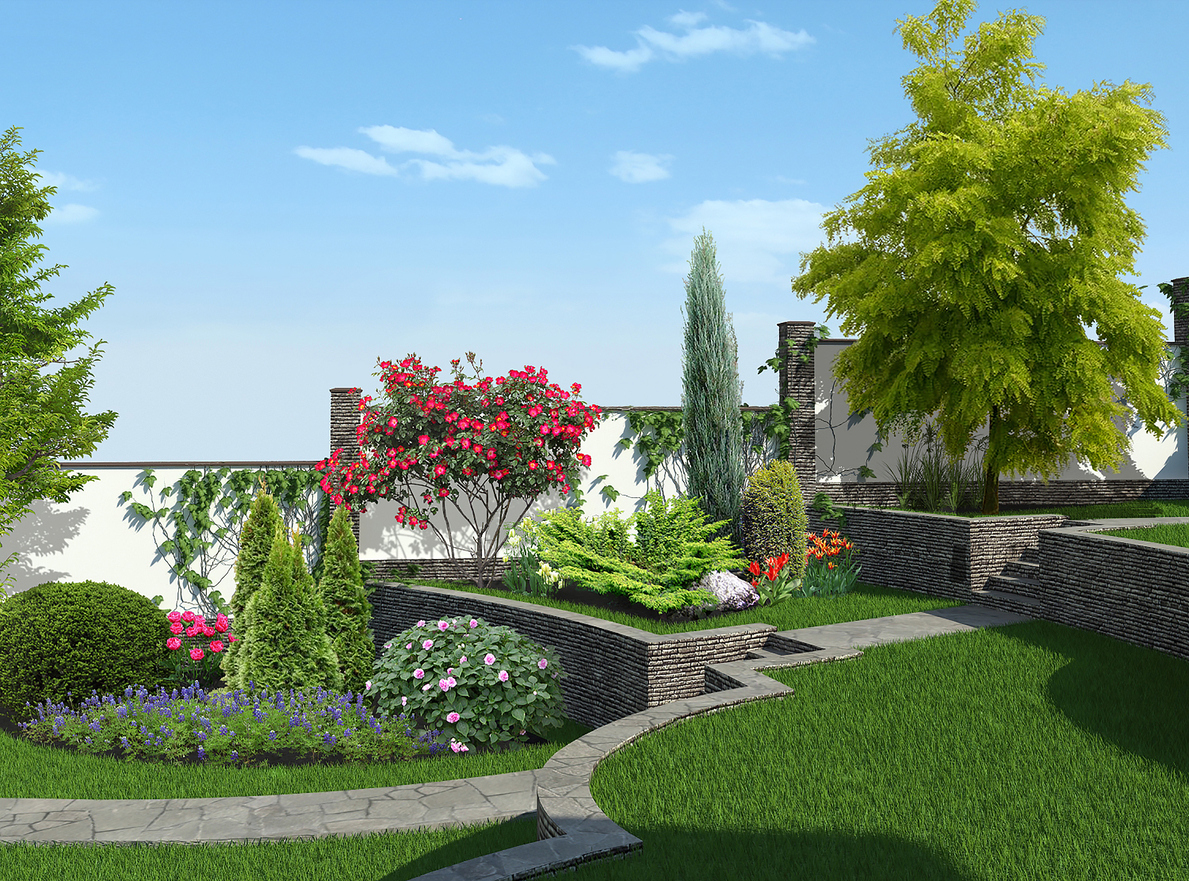

We may earn revenue from the products available on this page and participate in affiliate programs. Learn More ›
Your property might sit in a depression, or perhaps you have a majestic view from the top of a small rise. Either way, in terms of landscaping and hardscaping, it’s hard to know what to do with a sloped backyard. It’s a challenge you’ll want to consider carefully from both an aesthetic and safety perspective, especially when it comes to resale value. A sloping yard with no landscaping can deter potential buyers, while an attractively landscaped yard is definitely a plus; these sloped yard ideas can offer inspiration.
1. Break Out in Tiers
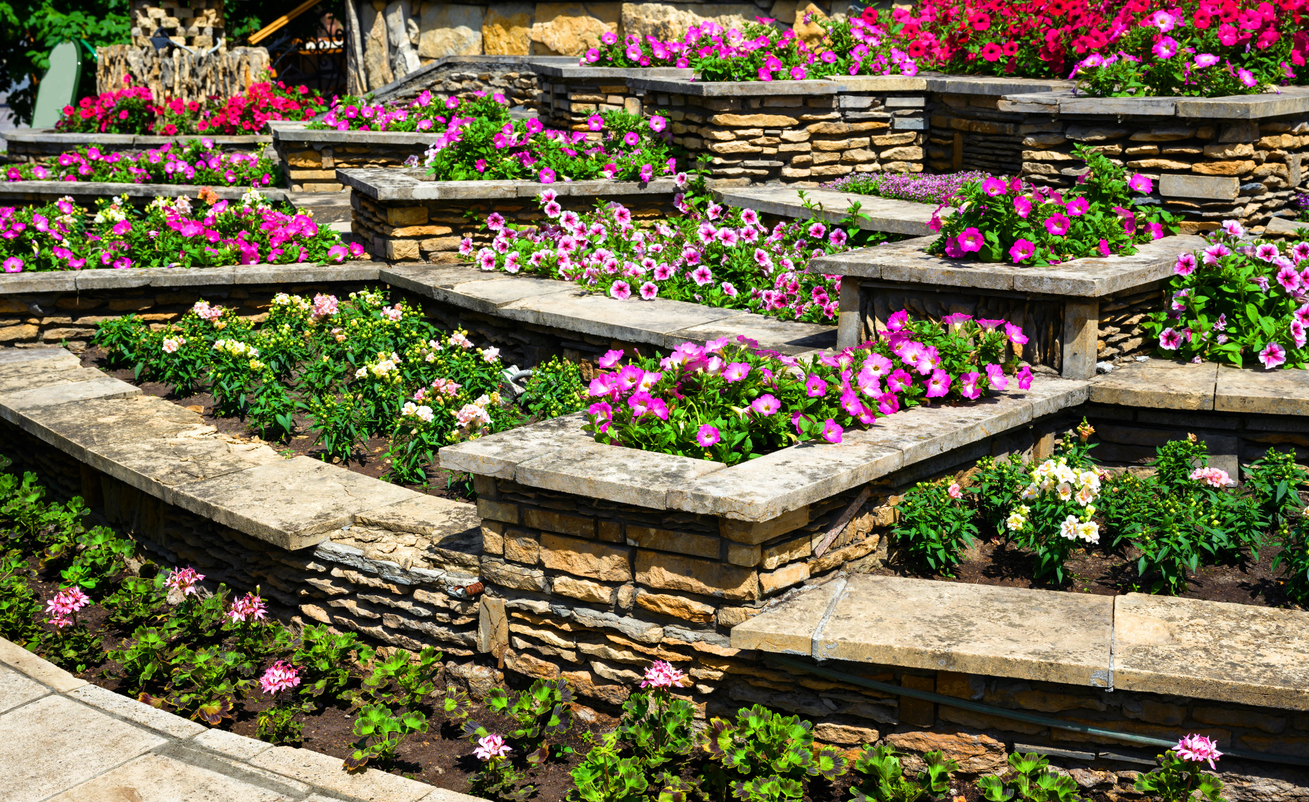
Creating several tiers on a sloped property can help manage erosion and give you the opportunity to layer different plants and tiered landscaping elements for a cohesive design. Whether you use railroad ties, stone pavers, or concrete to form the backyard terrace, a terraced yard will make a dramatic impact on the overall look of your property.
Related: 9 Clever Landscaping Hacks for Your Best-Ever Yard
2. Build Some Stairs
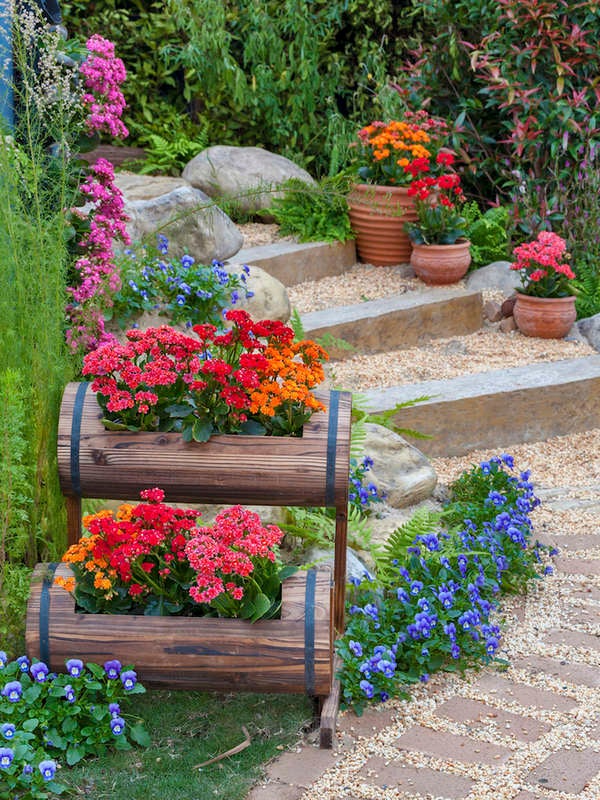
If you let vegetation cover your sloping property in glorious abandon, impose a little order by building a set of stairs that leads up to flatter ground. Whether you opt for a wooden staircase or concrete steps, this yard feature will blend into the landscape far better if it’s surrounded by plantings on either side. You can also use a carefully stacked series of large, flat stones to create a natural-looking staircase.
RELATED: 20 Plants to Use as Lawn and Garden Borders
3. Design a Waterfall
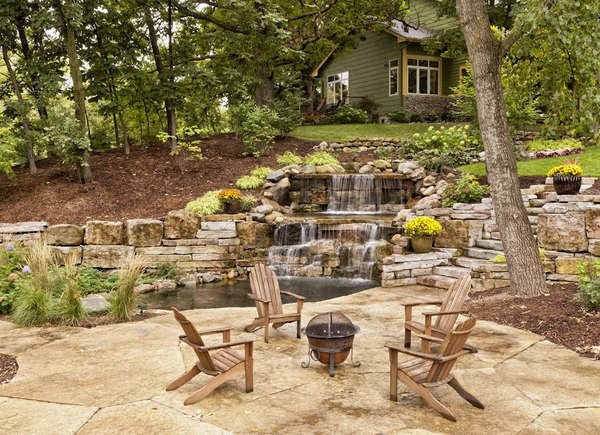
If you’re ambitious, use the height that your hilly backyard provides to your advantage, and build a sensational water feature. The soothing sound of water will bring a relaxing vibe to your outdoor space, turning it into your own private oasis.
RELATED: 10 Water Features to Make Any Backyard Landscape Complete
4. Lay a Winding Path
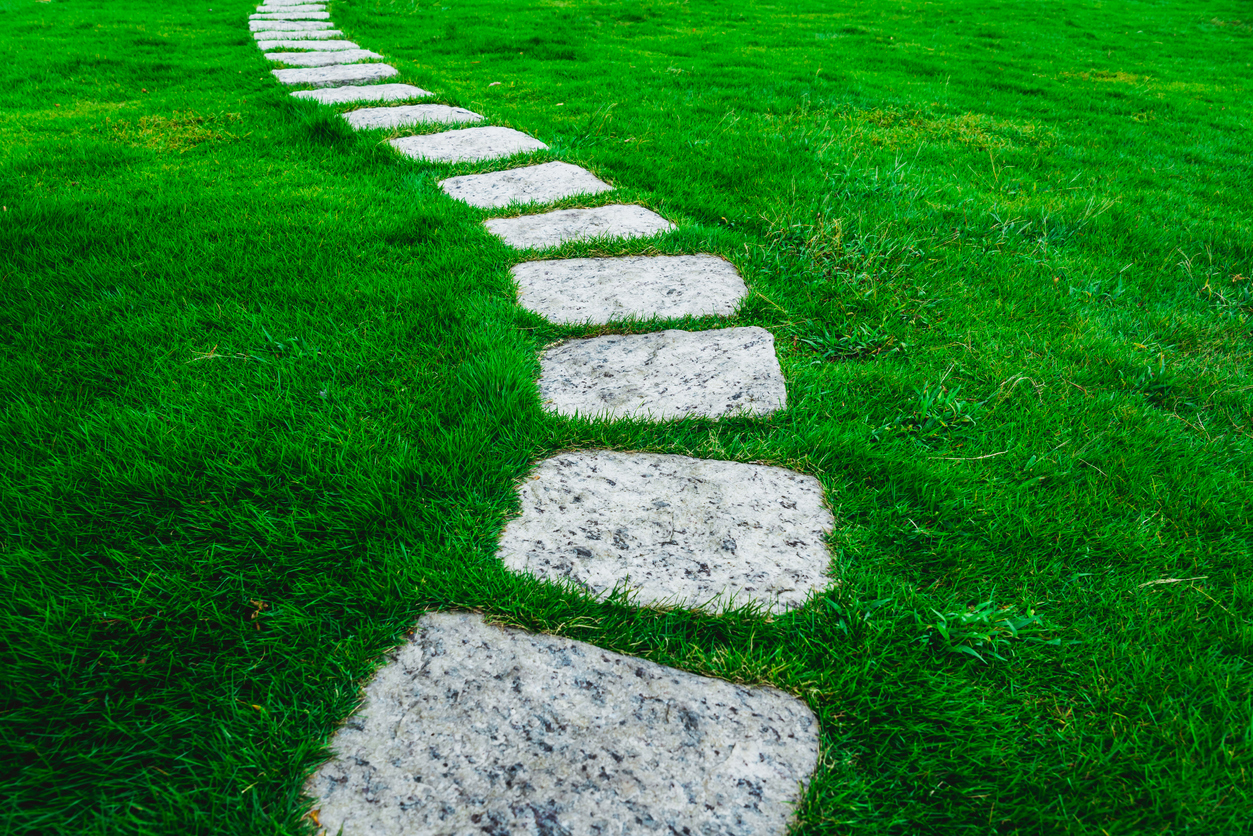
A winding or switchback path can make it much easier—and safer—to explore a sloped piece of property. A meandering pathway also provides an attractive focal point and draws the eye through the landscape.
RELATED: 10 DIY Step Stones to Brighten Any Garden Walk
5. Erect a Retaining Wall
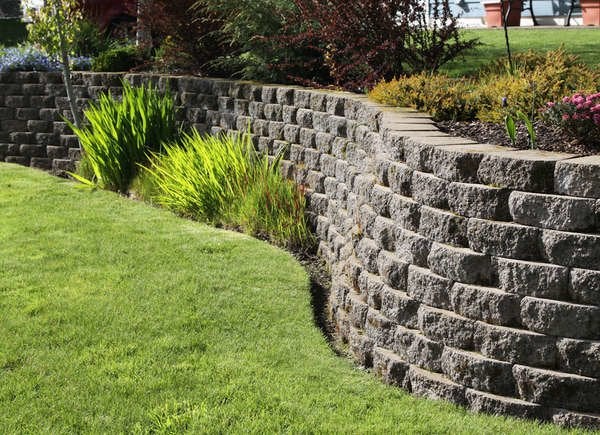
You can make a sloping property more functional by cutting away a portion of a hill and installing a retaining wall to hold back the soil. This is a great opportunity to create a dedicated planting area behind and along the retaining wall, while reclaiming a portion of your yard for an expanse of grass on level ground. For a modern retaining wall, consider using gabion cages.
RELATED: Edge Your Beds: 13 Easy Ideas for Landscape Borders
6. Cultivate a Rock Garden
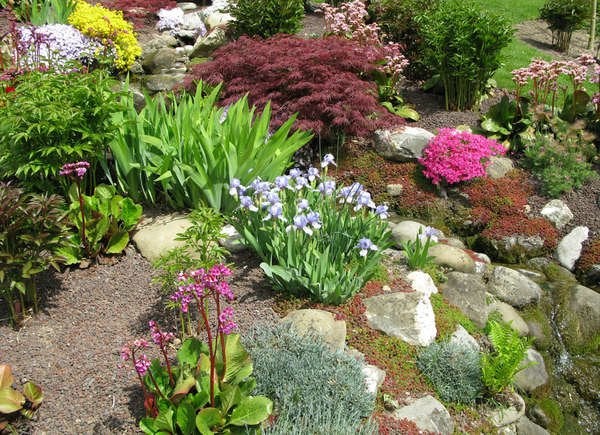
Hillsides can pose a landscaping challenge for plants, which can suffer from the soil erosion or poor drainage typical of sloping properties. When you arrange rocks of varying shapes and sizes on your hillside, you create a stable base for rock-loving plants like stonecrop, other succulents, and ornamental grasses. A rock garden used for slope landscaping looks lush, and reduces your maintenance responsibilities in the yard.
RELATED: The 15 Best Plants for Rock Gardens
7. Devise a Destination Fire Pit
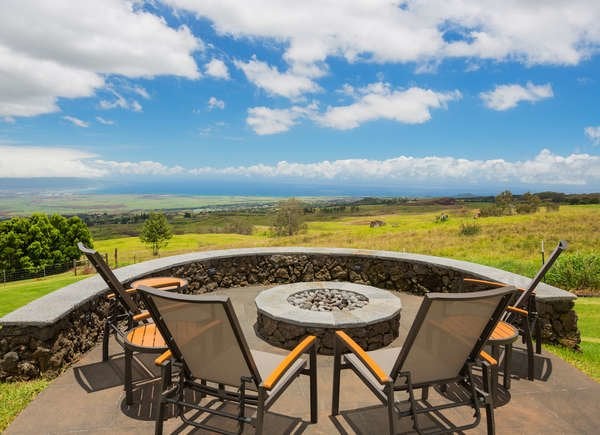
Hardscaping a sloping property is a common landscape design technique, and one that can pay off beautifully. When there’s a fire pit or outdoor kitchen on the level portion of your property, the slope isn’t neglected space—it’s the pathway to, or vista from, a stunning destination.
RELATED: After 33 Hours of Testing, Here Are Our 11 Best Fire Pits of 2025
8. Set Up Some Veggie Beds
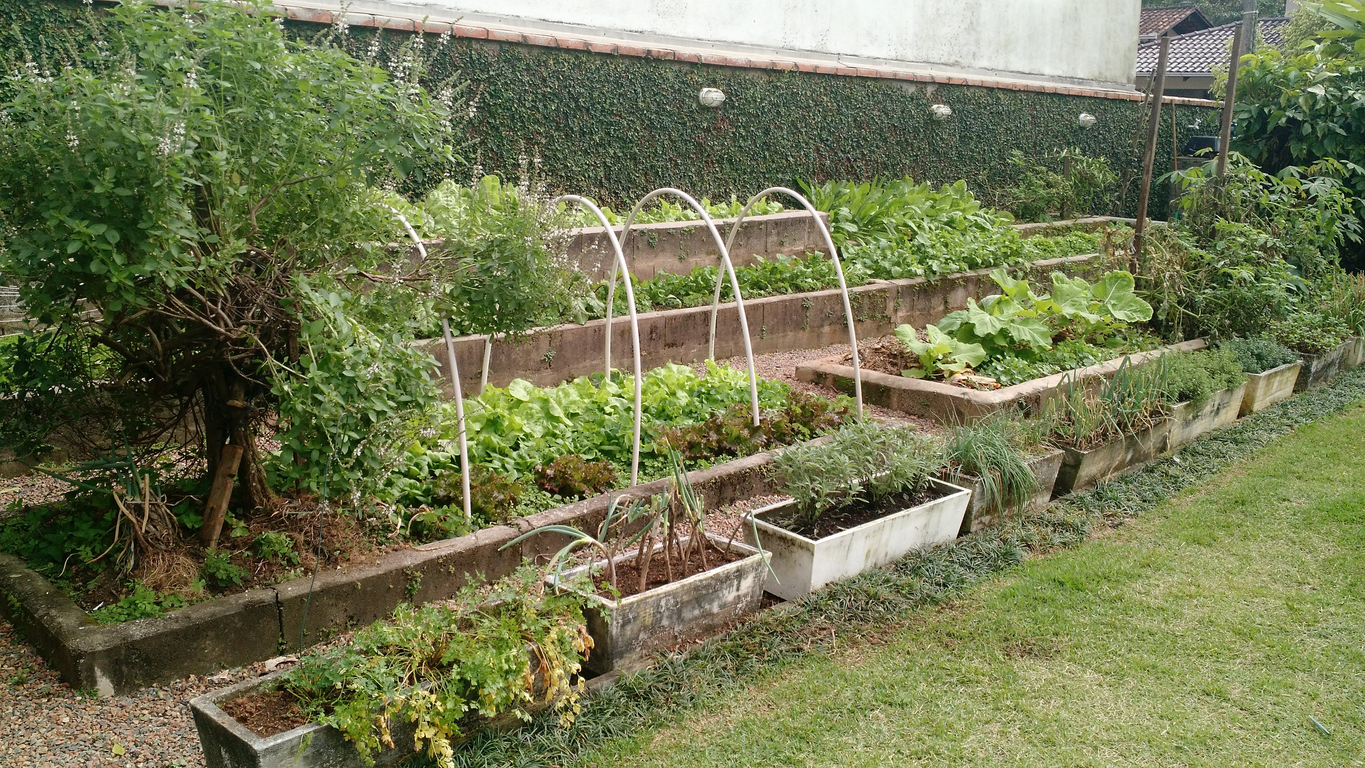
Take advantage of unused real estate on a slope that gets full sun by installing terraced, raised beds for vegetables. Deeper sections of the beds can be used for root vegetables that require more soil; the shallower ends will be perfect for herbs and vining plants.
RELATED: The Best Riding Lawn Mowers for Hills, Tested and Reviewed
9. Rely on Native Plants
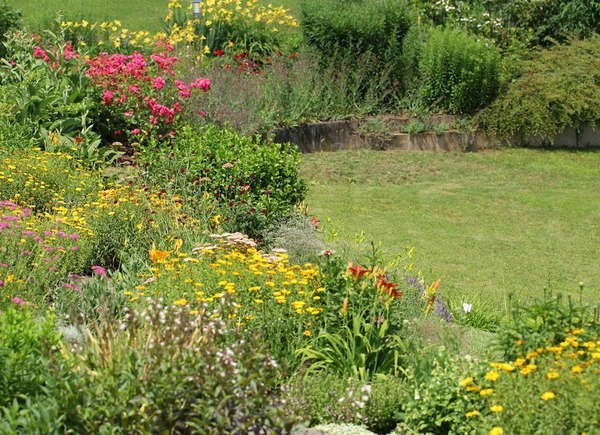
Festooning a hillside with plants that are native to your area can help make maintenance easier in a spot that would be difficult to mow and landscape. With native plants, you can be fairly certain that they’ll be successful without much help from you, and planting on a slope will help reduce erosion by providing a network of roots to hold soil in place.
Related: 34 Amazing Plants That Are Native to North America
10. Create a Dry Creek Bed
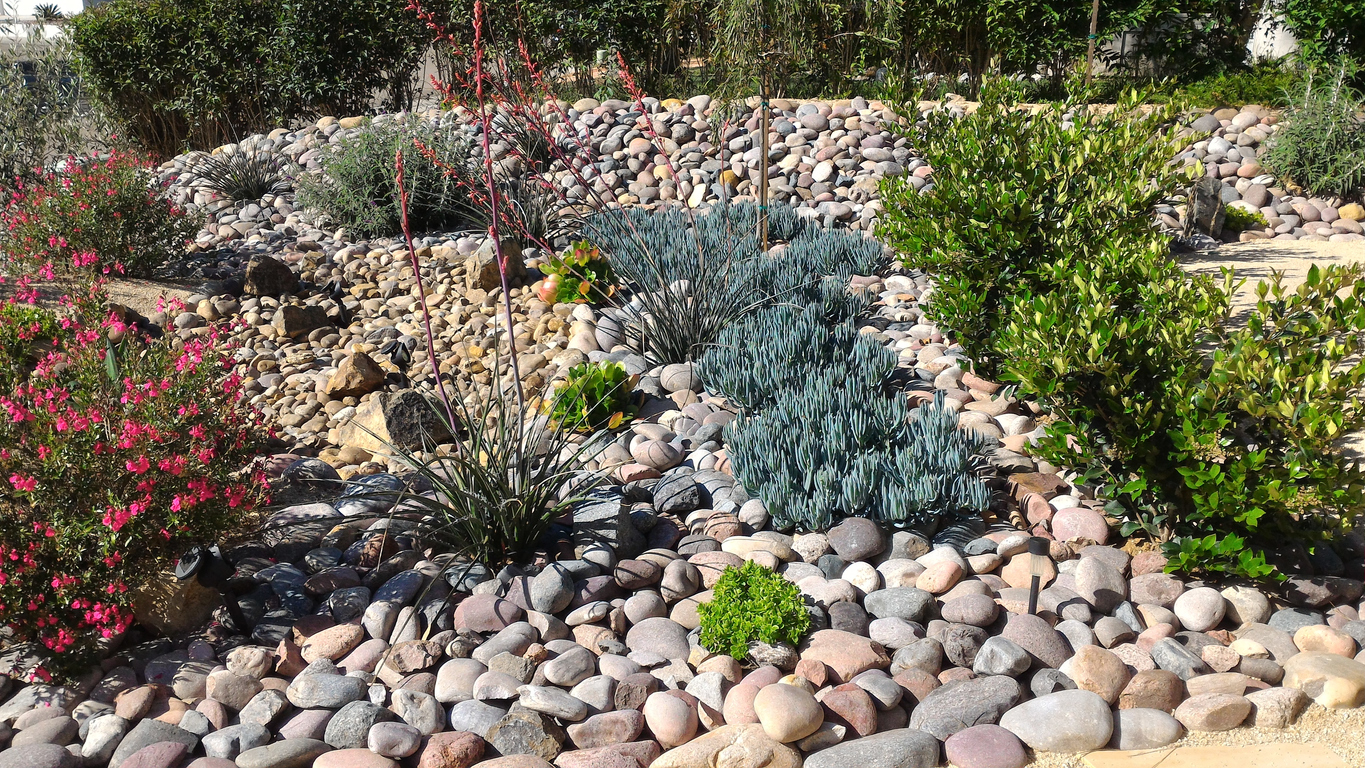
Perfect for a sloping yard, a dry creek bed is an attractive landscape element that helps to mitigate drainage issues. Using found rocks, purchased pebbles or gravel, simply create a winding “river” of stones leading from a high point of your yard to a low part that can safely accommodate water. Build up the sides of your river with larger stones and in-ground or container plantings.
RELATED: 20 Landscaping Mistakes That Make Home Buyers Walk the Other Way
11. Plant Ground Cover
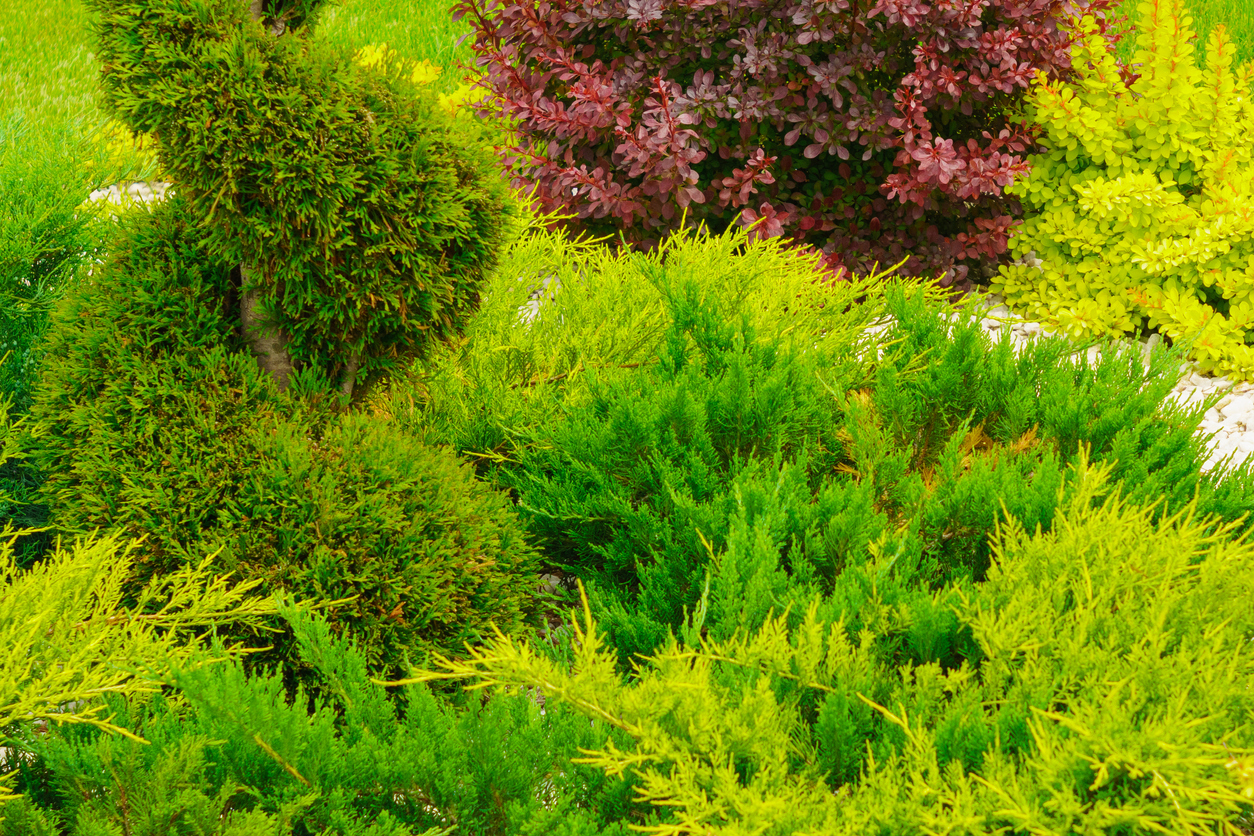
Among the simplest sloped backyard ideas is to plant a sturdy, fast-growing ground cover on a hill. The plants will blanket the slope with attractive foliage while providing erosion control. Asiatic jasmine, vinca, liriope, and creeping juniper are among the candidates you might consider for this project. Invest in several flats of small plants that you can space appropriately for quick, full coverage.
RELATED: 45 Backyard Landscaping Ideas for Creating the Ultimate Outdoor Living Space
12. Install a Play Area
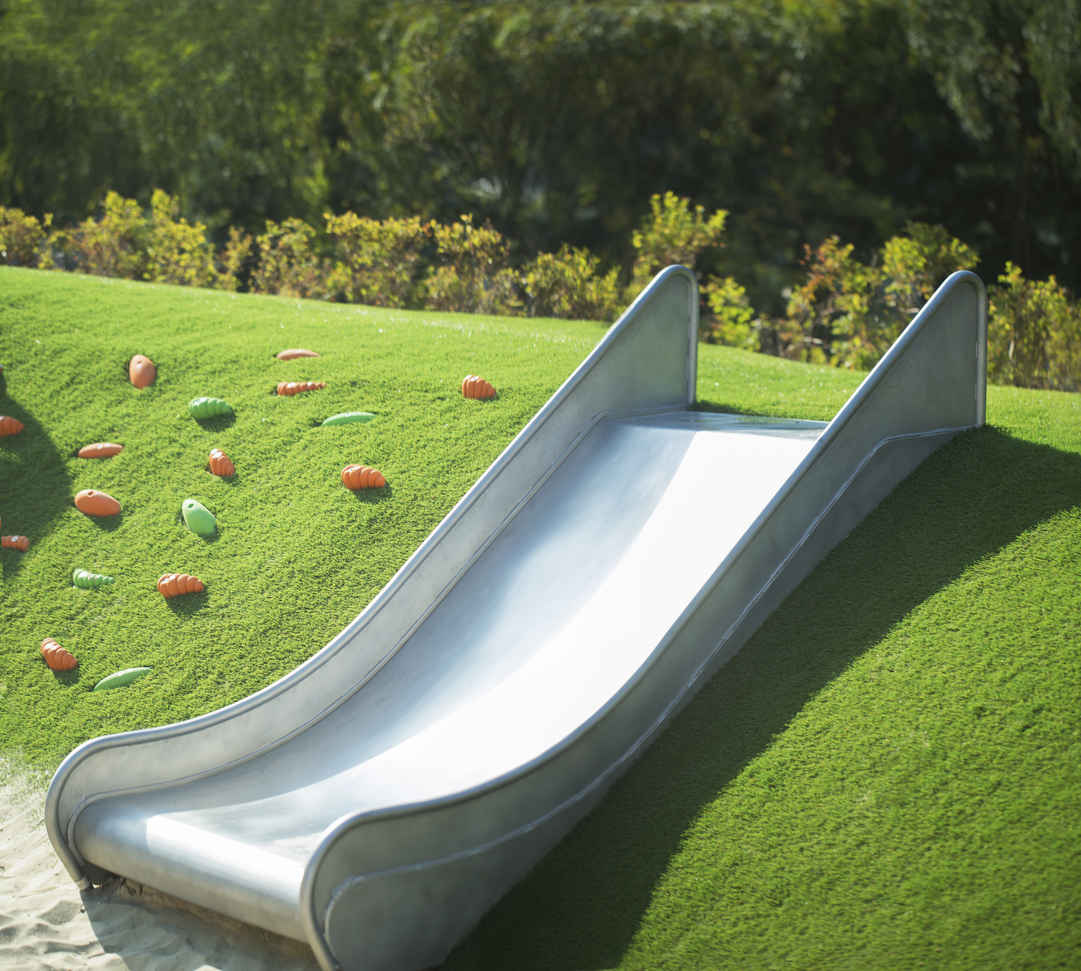
Let your hilly yard inspire adventure for the littles! Lay a slide into the hill, and build a set of steps sized just right for short legs. Maybe create a climbing area out of carefully set boulders with flat tops that kids can scramble up. Or construct a gently sloped climbing “wall” with sanded planks, and securely attached rock-climbing footholds and handholds.
